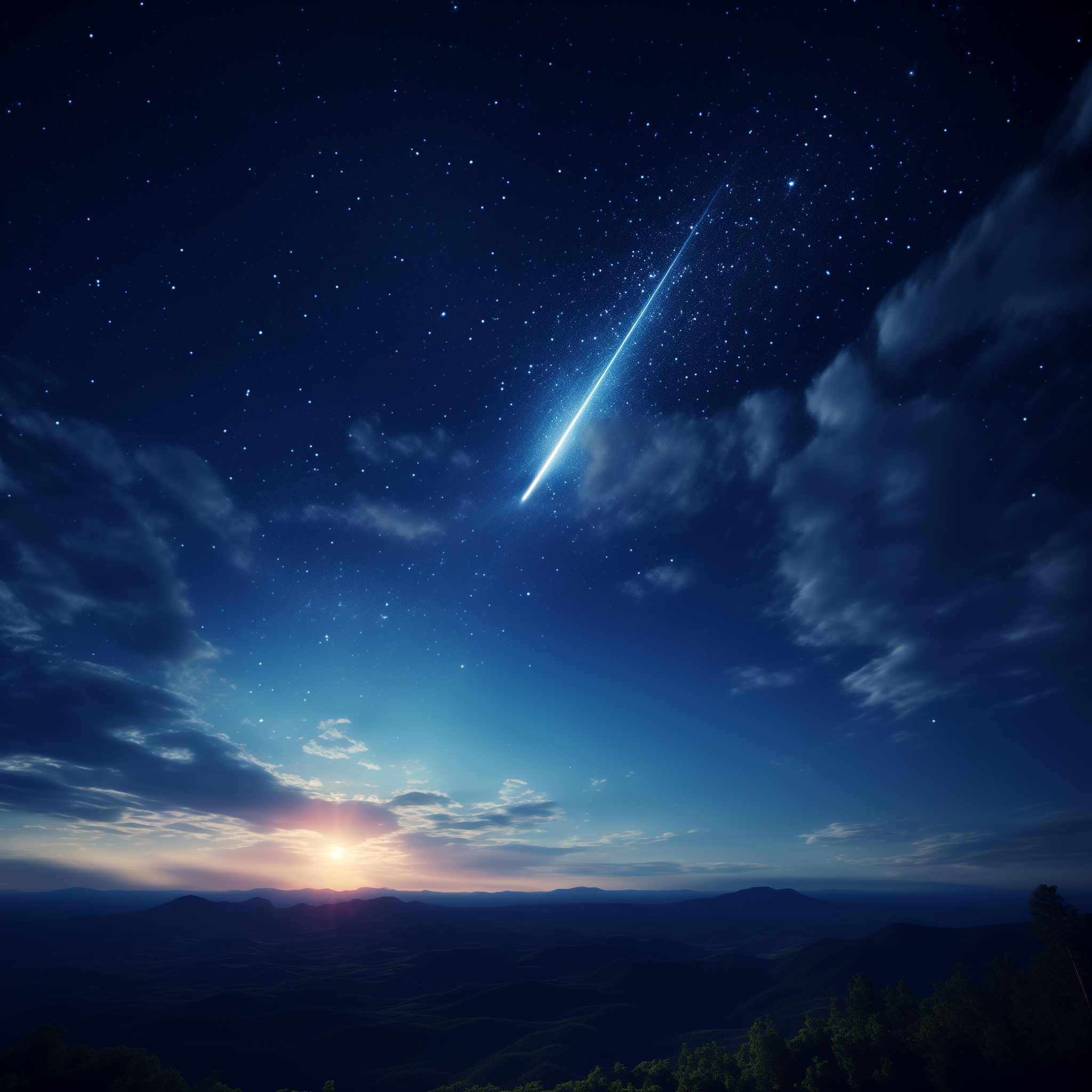
Which Meteor Showers can be seen in New Zealand?
New Zealand, being in the Southern Hemisphere, experiences different night sky views than locations in the Northern Hemisphere. This can affect the visibility of meteor showers.
Meteor showers are connected with debris trails left by comets or asteroids, and these dust trails are distributed in space in a specific way. When Earth orbits the Sun, it passes through these trails during certain times of the year. Meteor showers that are more favourable for observation in the Northern Hemisphere may not be as visible or may not even occur in the Southern Hemisphere, and vice versa.
Meteors appear to radiate from specific areas in the sky, creating what is known as a radiant point. Shooting stars can be seen all over the night sky, but during a meteor shower, they share a common trajectory originating from a radiant point.
The radiant point is the perspective from which these shooting stars seem to originate, the meteor shower is named after the constellation. For example, in the Gemini meteor shower, meteors streak away from the radiant point in Gemini.
If the radiant point is high in the sky, we can see more meteors. But if the constellation is low on the horizon, the Earth hides some of them.
The following are a few of the more active meteor showers that can be seen from New Zealand;
New Meteor Shower December 2023

An interesting celestial event is set to unfold in New Zealand later this year (2023) as the debris and dust from the renowned Comet 46P/Wirtanen1 collide with Earth's atmosphere on December 12.
Mark your calendars and hope for clear skies!
The Geminid Meteor Shower ~ December

It's an end of year pre-Christmas sky event you won't want to miss!
Sadly the radiant is low for those of us in New Zealand. Here in the Southern Hemisphere the radiant is highest about 2 hours after local midnight time, but even then Gemini is low to the north. This means only a small proportion of the meteors will be visible in New Zealand.
The Eta-Aquarid Meteor Shower ~ May

In 2024, the Eta-Aquarids will be at their brightest on the night of May 5 – 6.
The May Meteor Shower happens each year between April 19 and May 28. It gets its name from the constellation Aquarius, which is the radiant point where the meteors appear to come from.
This meteor shower is one of two created by debris from Comet Halley. When the Earth passes through the path of Comet Halley around the Sun in October, it creates another meteor shower called the Orionids, peaking around October 20.
Comet Halley takes about 76 years to go around the Sun completely. The next time we'll be able to see it from Earth is in 2061.
If you're wondering when the meteor shower will be at its best, mark your calendar for the night of May 5–6, 2024 and it is right before dawn that is the optimal time in New Zealand to see these shooting stars.
The Leonid Meteor Shower ~ November

In November, the fast and bright Leonids take their turn painting the darkness with streaks of light.
The Leonid meteor shower is annually active in the month of November and it usually peaks around November 17 or 18. The shower is called Leonids because its radiant, or the point in the sky where the meteors seem to emerge from, lies in the constellation Leo.
The Leonids occur when the Earth passes through the debris left by Comet Tempel-Tuttle. The comet takes around 33 years to make one orbit around the Sun. As the Earth passes through the remnants left by Comet Tempel-Tuttle, it creates a display of shooting stars, dust burning up in the atmosphere.
The best conditions as always are on a cloudless night when the moon's brightness doesn't overshadow the meteor shower.
Finally, what to do if the sky is cloudy outside? Relax and enjoy them inside! There are meteors in all my star ceiling packs. Nights are 100% shooting star guaranteed for in-between real meteor showers and for when the weather gets dark.

Quick links
About Stella Murals
Stella Murals is an Australian based glow in the dark art studio. Started in New Zealand in 2011, owned and operated exclusively by artist Esther Iranyi.

Leave a comment: